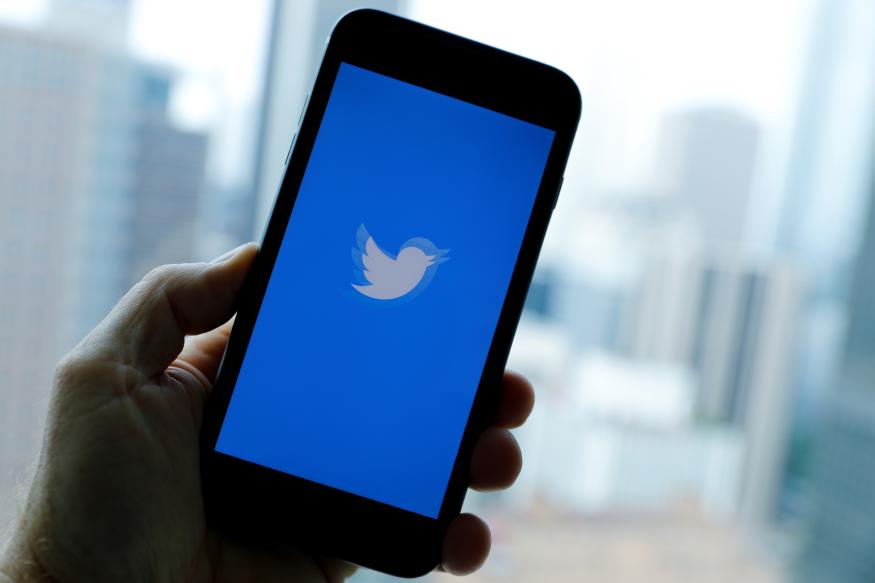Press Release
How To Turn off Professional Account on Instagram

There may come a time when you no longer want to have a professional Instagram account. Maybe you’re winding down your business, or you just don’t need the extra features anymore. Whatever the reason, here’s how to turn off professional accounts on Instagram. Keep in mind that this will also delete all of your data from the app. So if you want to keep anything, make sure to back it up first!
What Is an Instagram Professional Account and Why Would You Want To Turn It Off
If you’re no longer interested in promoting your professional brand on Instagram, you may be considering turning off your professional account. Here’s how to do it:
First, log into your Instagram account and go to your profile page. On the top right-hand side of the screen, you’ll see a settings icon. Tap on it.
Next, scroll down to the bottom of the page and tap on “Switch back to personal account.”
A pop-up will appear asking you to confirm that you want to turn off your professional account. Tap on “Yes, I’m sure.”
Once you’ve turned off your professional account, all of your professional photos and videos will be hidden from your profile. However, they will still be stored on Instagram’s servers. If you decide you want to reactivate your professional account at any time, simply follow the same steps and select “Switch back to business account.”
How To Turn Off Your Professional Instagram Account
Instagram is a great way to stay connected with friends and family, but sometimes you need to take a break from social media. If you’re looking to turn off your professional Instagram account, here’s how. First, go to your settings and select “Account.” From there, you will see the option to “Temporarily disable your account.” This will hide your profile and all of your photos and videos from the public, but you will still be able to log in and access your account. If you decide that you want to permanently delete your account, you can do so by going to the same “Account” page and selecting “Delete Account.” Keep in mind that this action is irreversible, so be sure that you really want to say goodbye to Instagram before hitting that delete button.
The Consequences of Turning off Your Professional Instagram Account
If you’ve ever considered turning your personal Instagram account into a professional one, you’re not alone. Many people have done it, and it can be a great way to build your brand and connect with potential customers. However, there are also some potential consequences to consider before making the switch. First of all, you’ll likely see a decrease in followers. Instagram users are used to seeing personal photos and videos, and they may not be interested in following a business account. Additionally, you may find it difficult to maintain a professional persona on Instagram if you’re used to posting more personal content. Finally, turning off your professional account could damage your relationship with potential customers or clients. If you’re thinking about making the switch, weigh the pros and cons carefully to make sure it’s the right decision for you.
How to Reactivate Your Professional Instagram Account if You Change Your Mind
If you’ve decided that you no longer want to keep your professional Instagram account active, there’s no need to worry. The process for deactivating a professional account is quick and easy. Simply follow the steps below:
Log into your professional Instagram account.
Tap on the “Edit Profile” button.
Scroll down to the “Account Type” section and select “Personal.”
Tap on the “Deactivate Account” button.
Confirm that you want to deactivate your account by tapping on the “Deactivate” button again.
Once you’ve deactivated your professional Instagram account, it will no longer be visible to other users. However, if you change your mind in the future, you can always reactivate your account by following the same steps and selecting “Business” instead of “Personal.”
Press Release
The Netflix Verse

If you’re looking for Moviesflix Expertise? Then, this is where you can find various sources that provide extensive information.
MoviesVerse – TheMoviesVerse – MoviesFlixPro
moviesflix.in, themoviesflix, moviesflixpro, moviesflix, moviesverse, movies flix, moviesflix pro, movie verse, and moviesflix.
https://themoviesverse.co/page/101/
FilmyZon – Moviesflix Verse Org
moviesverse, movies verse, moviesflix, moviesflixpro, moviesflix pro, moviesverse.com, moviesverse.in, moviesflix.in, movieverse, movies flix, and themoviesverse are terms that refer to the period between March 12 and May 26, 2021. The age of Moviesverse.org.in is 11 months and 1 week. It is a domain with the extension org.in. This website is thought to be worth $9 and generates about $1 each day in revenue.
https://digitaldominar.com/wpc2027-live-log-in/
Download HD Hollywood and Bollywood Films from Moviesflix in 2022
Mar. 10, 2022 Customers can select the screen resolution for a movie on Moviesflix pro.in. At Moviesflix pro com, you may get a tonne of Hollywood, Bollywood, Tollywood, and Moviesflix pro online series for nothing. Users have the option of downloading movies in full HD format from Moviesflix pro in either 480p, 720p, or 1080p formats.
https://networth.co.in/moviesflix-download-hd-hollywood-boll
moviesflix | moviesflix | themoviesflixverse
Many premium movie titles are available on the Moviesflix Verse Pro, including films in the English, Hindi, Tamil, and Telugu languages. Hollywood films will also be available to you in High Definition. They also use 720p HD or 1080p full HD quality. The graphics may be seen more vividly and clearly than in regular movies thanks to the HD format.
https://www.keyword-rank.com/search/themoviesflixverse
Review of MoviesFlix Pro: Download Bollywood Movies
A variety of Hollywood movies are available for download in the Moviesflix Hollywood Movies area as of November 24, 2021. Action, Thriller, Crime, Suspense, Horror, Drama, Love Story, and Cartoon movies are just a few examples of the categories you can find. You can search for further relevant domains on Google. the moviesflix moviesflix uri moviesflix bollywood moviesflix verse, moviesflix pro.
The MoviesFlix Pro Review: Download Bollywood Films Moviesflix uri Moviesflix Verse
Movies | Official Netflix Website
Whether they’re terrifying, humorous, serious, romantic, or everywhere in between, movies have the power to move us like nothing else can. There are so many games, so much to do.
https://www.netflix.com/in/browse/genre/34399
TheMoviesFlix, HDMoviesFlix, and Moviesflix Pro
Moviesflix, HDMoviesflix, moviesflix.com, themoviesflix, moviesflix org, moviesflix pro, moviesflixpro, movies verse, and moviesflix are all forms of the streaming service.
Press Release
You are instantly suspended by a Twitter bug when you tweet “Memphis”

According to a glitch on Twitter, if a person tweets the phrase “Memphis,” their account will be temporarily terminated, according to BleepingComputer.
This problem first appeared today when users who were tweeting about Memphis, Tennessee, sports teams, or athletes noticed that they were suddenly suspended for a period of 12 hours.
Even while some claim that Twitter’s flaw has been fixed, a recent test by BleepingComputer shows that we were immediately suspended when we tweeted the term “Memphis.”
While it may seem like Twitter is trying to ban the great city of Mephis, this is probably the result of a spam, bot, or fraud filter that has been set up incorrectly.
Despite not disclosing the precise cause of the bug, Twitter has now addressed it.
Twitter issued a comment to BleepingComputer stating that “the situation stated was the consequence of a bug, and has subsequently been rectified.”
In our tests, in order to regain access to the account if you were impacted by the bug, you had to complete a captcha and verification process. It will welcome you back as a “person” once you have verified your account.
This suggests that a malfunctioning anti-bot filter was probably to blame for the bug.
Press Release
SPANISH DELIVERY APP GLOVO RAISES $121M FROM SWISS REAL ESTATE FIRM STONEWEG TO BUILD OUT DELIVERY-ONLY CONVENIENCE STORES FOR SUB-30 MINUTE DELIVERY TIMES (MACARENA MUNOZ MONTIJANO/BLOOMBERG)

Macarena Munoz Montijano / Bloomberg:
Spanish delivery app Glovo raises $121M from Swiss real estate firm Stoneweg to build out delivery-only convenience stores for sub-30 minute delivery times — – Stoneweg will build, refurbish property to help Glovo expand — Glovo’s orders for convenience items have surged 300%
-

 Apps1 year ago
Apps1 year agoWhy is Everyone Talking About Hindi Keyboards?
-

 Social Media1 year ago
Social Media1 year agoWho is Rouba Saadeh?
-

 Apps1 year ago
Apps1 year agoThings you need to know about Marathi keyboard today
-

 Apps1 year ago
Apps1 year agoStuck with Your default Bangla keyboard? Isn’t it time for a change?
-

 Games1 year ago
Games1 year agoTop 7 Popular Puzzle and Card Games for Relaxing Your Brain on Mobile, Featuring Solitaire
-

 Social Media1 year ago
Social Media1 year agoMati Marroni Instagram Wiki (Model’s Age, Net Worth, Body Measurements, Marriage)
-

 Entertainment1 year ago
Entertainment1 year ago12 Online Streaming Sites that Serve as Best Alternatives to CouchTuner
-

 Entertainment1 year ago
Entertainment1 year agoMovierulz Website: Movierulzz 2021 Latest Movies on Movierulz.com
